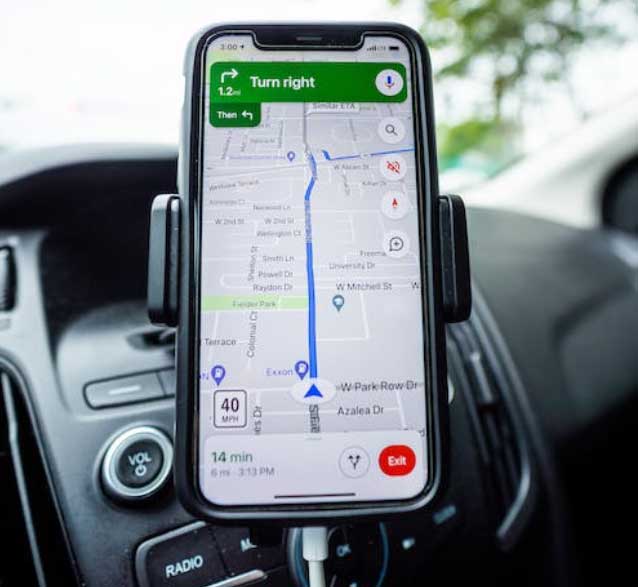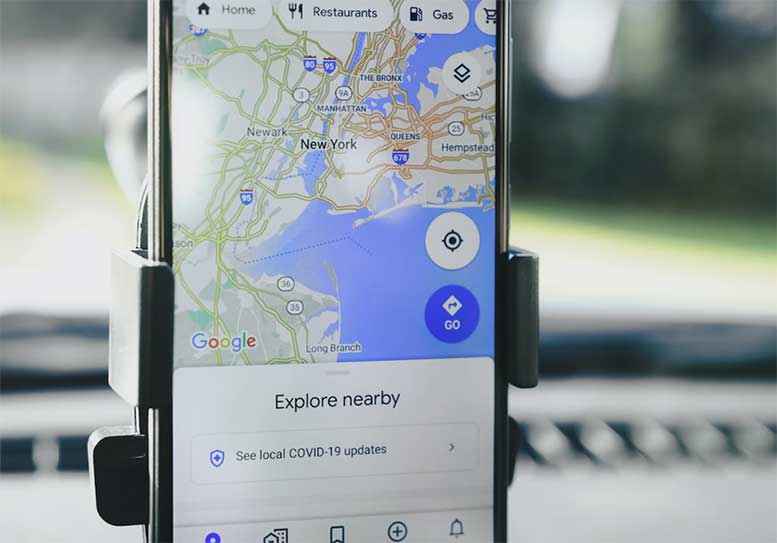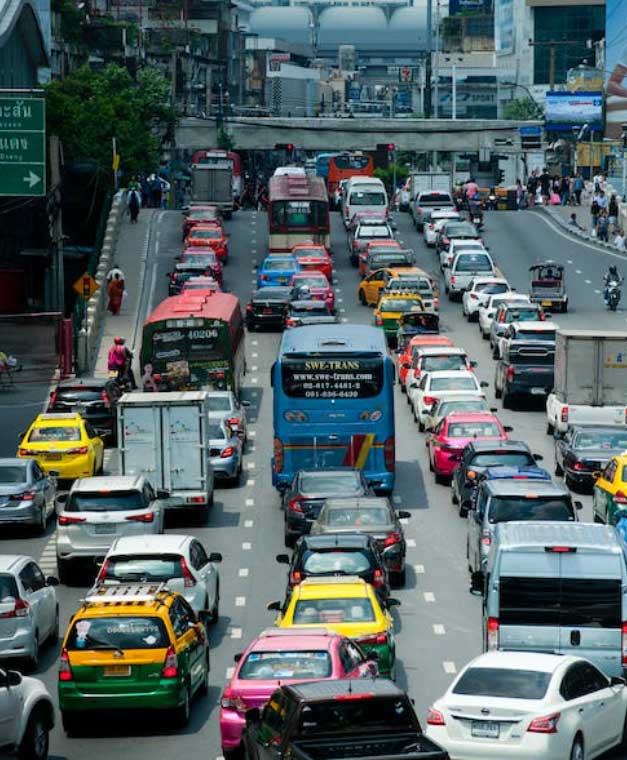Quick Answer: To calculate ETA, Google Maps uses a combination of real time traffic data, predictive analytics, and historical traffic patterns with predictive modeling.
Ever wondered how Google Maps predicts your arrival time so accurately? Whether you’re dashing through city streets or cruising on a highway, Google Maps seems to have an uncanny ability to forecast your ETA (Estimated Time of Arrival).
Let’s explore the technology and algorithms that power this essential feature of one of the world’s most popular navigation tools.
Understanding the Basics of ETA Calculation
Imagine you’re planning a trip from your home to a new restaurant in town. Google Maps starts this journey by calculating the straight-line distance between these two points. But, as we all know, roads aren’t straight lines.
So, Google Maps traces the actual route you’ll take, whether it involves winding roads, highways, or busy streets. This step is crucial because it lays the groundwork for the ETA.

Next, Google Maps dives into its extensive database, pulling up the speed limits for each segment of your route. It’s not just about the maximum speed allowed; it’s about understanding the rhythm of the road.
For instance, on a highway, you might cruise at 65 mph, but in a residential area, you’ll need to slow down to 25 mph. Google Maps meticulously calculates the time it would take to travel each segment at the legal speed limit, ensuring that the ETA is not only efficient but also lawful and safe.
Integrating Real-Time Traffic Data
Now, let’s add another layer to our journey: real-time traffic data. Here’s where Google Maps transforms from a static map to a dynamic travel companion. This real-time data isn’t conjured from thin air; it’s sourced from millions of users like you and me. When we use Google Maps, our location and speed are shared anonymously, painting a vivid picture of current traffic conditions.
Now imagine you’re about halfway to the restaurant, and there’s an unexpected traffic jam ahead. In the past, you might have been stuck in that jam, watching your ETA get pushed further and further back. Not anymore.

Google Maps detects the slowdown and recalculates your ETA in real-time. It might reroute you to a less congested street or simply update your arrival time based on the current traffic. This adaptability ensures that you’re not caught off guard and can adjust your plans accordingly.
Thus, Google Maps’ ETA calculation is a blend of careful planning and real-time adaptation. It starts with a basic framework based on distance and legal speed limits, then enhances this with live traffic data, ensuring that your journey is as accurate and stress-free as possible.
Whether you’re commuting to work or exploring new destinations, Google Maps is there to guide you every step of the way, adapting to the ever-changing roads just as swiftly as you do.
Advanced Factors Influencing ETA
When we plan a trip, we often think about the here and now. But Google Maps thinks ahead, way ahead. It doesn’t just look at what’s happening on the roads at this moment; it dives into the past to predict the future. How? By studying historical traffic patterns.
Historical Traffic Patterns and Predictive Modeling
Think about your daily commute. On Monday mornings, the traffic might be heavier compared to a lazy Sunday afternoon. Google Maps knows this because it has analyzed traffic data from countless Mondays and Sundays. It understands that at 8 am on a weekday, the roads are likely to be bustling with commuters.

Conversely, at the same time on a weekend, the streets might be relatively empty. This insight allows Google Maps to predict how these established patterns will affect your journey, giving you a heads-up if you need to leave earlier than usual on a busy day.
This predictive modeling is a huge addition for planning trips. Whether you’re scheduling a business meeting next week or planning a road trip, Google Maps can forecast traffic conditions based on historical data, helping you choose the best time to hit the road.
User Behavior and Adjusted Estimates
Now, let’s talk about us, the drivers. Google Maps knows that we’re all unique in how we drive. Some of us stick religiously to the speed limit, while others… well, let’s just say they enjoy the thrill of speed. Google Maps understands this diversity in driving behavior. It subtly adjusts its ETA calculations based on the speeds that drivers typically maintain on specific roads.
For instance, if the majority of drivers on a particular highway tend to go slightly above the speed limit, Google Maps factors this trend into its ETA calculations for that stretch of road. This doesn’t mean it encourages speeding – far from it. It’s about providing a realistic estimate based on actual driving patterns.
Environmental and Unpredictable Factors
Finally, let’s consider the elements outside our control – the unpredictable factors like weather and sudden events. A sunny day and a snowy afternoon can make a world of difference in traffic conditions. Google Maps keeps an eye on the skies and the roads. It adjusts ETAs based on weather forecasts and real-time weather conditions.
But what about those truly unforeseen events? A sudden accident or an unexpected road closure can throw a wrench in the best-laid plans. While these incidents are challenging to predict, Google Maps is constantly updating its data to give you the most current information.

If there’s an accident on your route, Google Maps will quickly recalibrate your ETA and, if possible, suggest an alternative route to keep you moving.
When it’s all said and done, Google Maps doesn’t just give you directions; it gives you a comprehensive, well-informed, and constantly updated guide to help you navigate not only the roads but also the myriad factors that can influence your journey.
Whether it’s understanding the rhythms of daily traffic, adapting to our driving habits, or responding to the unpredictable, Google Maps is there to ensure that your travel plans remain as seamless as possible.
The Accuracy of Google Maps’ ETA
When we talk about the reliability of Google Maps’ ETA, we’re not just throwing around assumptions. The accuracy of this feature has been put to the test, rigorously and repeatedly. Users like us have played a crucial role in this.
Think about the last time you used Google Maps for a trip. The app predicted your arrival time, and then you experienced the actual journey. By comparing these two, we’ve collectively helped validate Google Maps’ precision.

The results? Google Maps is often spot-on, with its predictions frequently aligning within a few minutes of the actual arrival time. This isn’t just a happy coincidence. It’s the result of Google’s dedication to refining their algorithms and incorporating massive amounts of data to ensure that when they tell you you’ll arrive at 3:15 pm, chances are, you really will.
The Impact of Traffic and Distance
Now, let’s get into some nuances. You might have noticed that sometimes, especially in heavy traffic or over longer distances, the ETA isn’t quite as precise. That’s because these factors introduce more variables into the equation.
In bumper-to-bumper traffic, a single lane reopening can significantly alter travel times. Similarly, on long journeys, factors like changing weather conditions or varying traffic patterns can impact the ETA.

However, it’s important to note that even in these scenarios, the deviation from the predicted ETA is usually minor. This means that even when you’re navigating through a maze of city traffic or embarking on a cross-country road trip, you can trust Google Maps to give you a fairly accurate idea of when you’ll reach your destination.
Limitations and Exclusions
We should also acknowledge that Google Maps, like any technology, has its limitations. One key aspect is how it handles unpredictable incidents, such as car crashes or sudden road closures. These events are, by nature, hard to predict and can significantly impact travel times.
Google Maps, understanding this, smartly excludes such unpredictable incidents from its initial ETA calculations. This approach is not about ignoring reality but rather about maintaining a baseline of reliability.
When an unforeseen event does occur, Google Maps quickly updates its information to reflect the new conditions, but the original ETA is calculated based on what is known and predictable. The same is true when Google Maps updates satellite images.
While no navigation tool can promise 100% accuracy all the time, Google Maps comes impressively close. By continuously evolving its algorithms and learning from a vast pool of real-world user data, it offers reliable ETAs that we’ve come to trust.
Whether we’re heading to a nearby café or setting off on a longer journey, Google Maps stands as a dependable guide, helping us to plan our time and our trips with confidence.
The Evolution of Google Maps’ ETA Predictions
Remember the early days of Google Maps? It started as a straightforward tool, primarily using distance and speed limits to estimate how long your journey might take. Fast forward to today, and it’s like we’re living in a different world of navigation. Google Maps has evolved into an indispensable travel companion, not just for you and us but also for businesses and governments.
This transformation didn’t happen overnight. The breakthrough was the integration of real-time traffic data. Now, when you check your route on Google Maps, it’s not just calculating the distance and speed limits; it’s looking at what’s happening on the roads right now.
This means if there’s a traffic jam or a road closure up ahead, Google Maps adjusts your ETA on the fly. But that’s not all. Google Maps took things up a notch with predictive modeling. By analyzing how traffic behaves at different times and days, it now provides a glimpse into the future of your journey.
This feature is especially useful for planning ahead, ensuring that both you and businesses can make smarter decisions about travel times. Today, Google Maps is more than just an app; it’s a smart tool that’s accessible to everyone.
Whether you’re a local entrepreneur planning deliveries or just trying to beat the morning rush, Google Maps has your back. Its continuous evolution, driven by data and sophisticated algorithms, has made it a key player in making our travels smoother and more predictable. We’ve come a long way from the basic map – now, we’re navigating the future, one smart prediction at a time.
Final Thoughts
Google Maps’ ETA predictions are a blend of sophisticated technology, real-time data, and predictive analytics. While no system is perfect, Google Maps continues to provide remarkably accurate arrival times, making it a trusted companion for millions of drivers around the world.
As we’ve seen, the science behind this feature is as fascinating as it is practical, showing how technology can seamlessly integrate into our daily lives to provide valuable, time-saving information.
Meet Ry, “TechGuru,” a 36-year-old technology enthusiast with a deep passion for tech innovations. With extensive experience, he specializes in gaming hardware and software, and has expertise in gadgets, custom PCs, and audio.
Besides writing about tech and reviewing new products, he enjoys traveling, hiking, and photography. Committed to keeping up with the latest industry trends, he aims to guide readers in making informed tech decisions.

